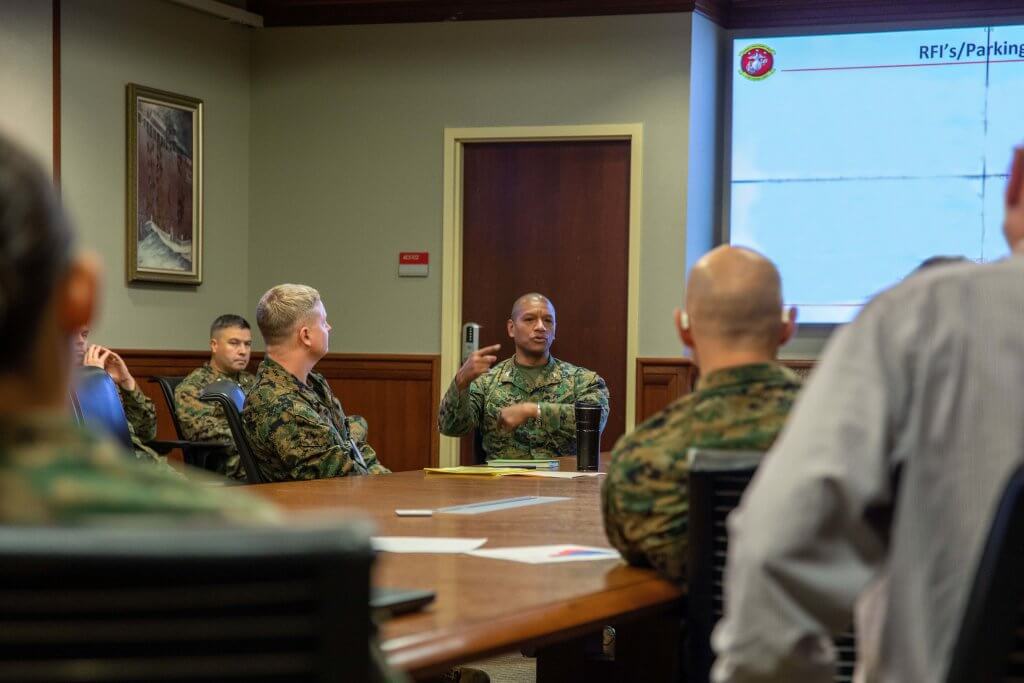NEW ORLEANS – The Marine Corps Reserve will have a larger role in worldwide crisis response, according to ongoing operational planning currently underway in New Orleans and at Camp Lejeune, North Carolina, between Marine Forces Reserve (MARFORRES) and II Marine Expeditionary Force (II MEF).
MARFORRES and II MEF are currently involved in detailed planning teams to provide the Marine Corps with the roadmap to establish a crisis response force using the Service Retained Forces of the two commands. This effort will not only allow for the development of a crisis and contingency response force in the near-term, but will also define requirements that will inform the Reserve Force of 2030.
“As part of the commandant’s plan for force design, Gen. David Berger tasked both commands last autumn to create a Crisis Response Force offering as a Marine Corps option to respond rapidly to crisis-type scenarios,” said Col. Andrew Shriver, MARFORRES assistant chief of staff for Capabilities and Requirements.
Unlike I MEF and III MEF, both of which are operationally controlled by geographic combatant commands, MARFORRES and II MEF are the Marine Corps’ service-retained force administratively and operationally controlled by the Marine Corps.
The team is also examining options to keep this crisis-response force postured forward, to a degree, to serve as stand-in forces able to execute contact layer activities, contribute to integrated deterrence, engage and train with partners and allies, and respond to crisis rapidly when called upon.
“As I MEF and III MEF are now tied to regional issues in the Pacific, this planning team’s work will ensure Marines are quickly on station anywhere else on the planet when needed,” said Lt. Gen. David G. Bellon, commander of MARFORRES and Marine Forces South.
In close coordination with II MEF, this initiative requires MARFORRES to organize, train and equip its force to support II MEF with well-trained, aggressive Marines and sailors ready to take the fight to the enemy. It might also mean changes to the Marine Corps’ force structure to align more closely to this problem set.
“These meetings are defining the service-retained box in terms of forces and capabilities to respond quickly to global crises,” Shriver said. “We are analyzing possible excesses and shortfalls to assess risk and, over a phased period of time, adjust the capability and/or capacity mix between II MEF and MARFORRES.”
Shriver said MARFORRES also wants to validate and refine “reserve-unique unit capabilities, such as civil affairs, personnel retrieval and processing, law enforcement, Marine Corps advisors, and airborne-capable air naval gunfire liaison company units, as well as Aviation Command and Control and Service Component Operational Logistics Augmentation capacity.”
“These capabilities represent relevant and sustainable options for the total force, enabling the active component to invest resources in other priority capability requirements,” he said.
In the upcoming months, MARFORRES and II MEF will support service-level planning efforts lead by Deputy Commandant, Combat Development and Integration and Marine Forces Command to continue this work and inform Reserve Force requirements of 2030 and beyond. As a result, Reserve Marines will be afforded many opportunities for continued exceptional service as part of a ready, relevant and responsive Marine Corps Reserve.

